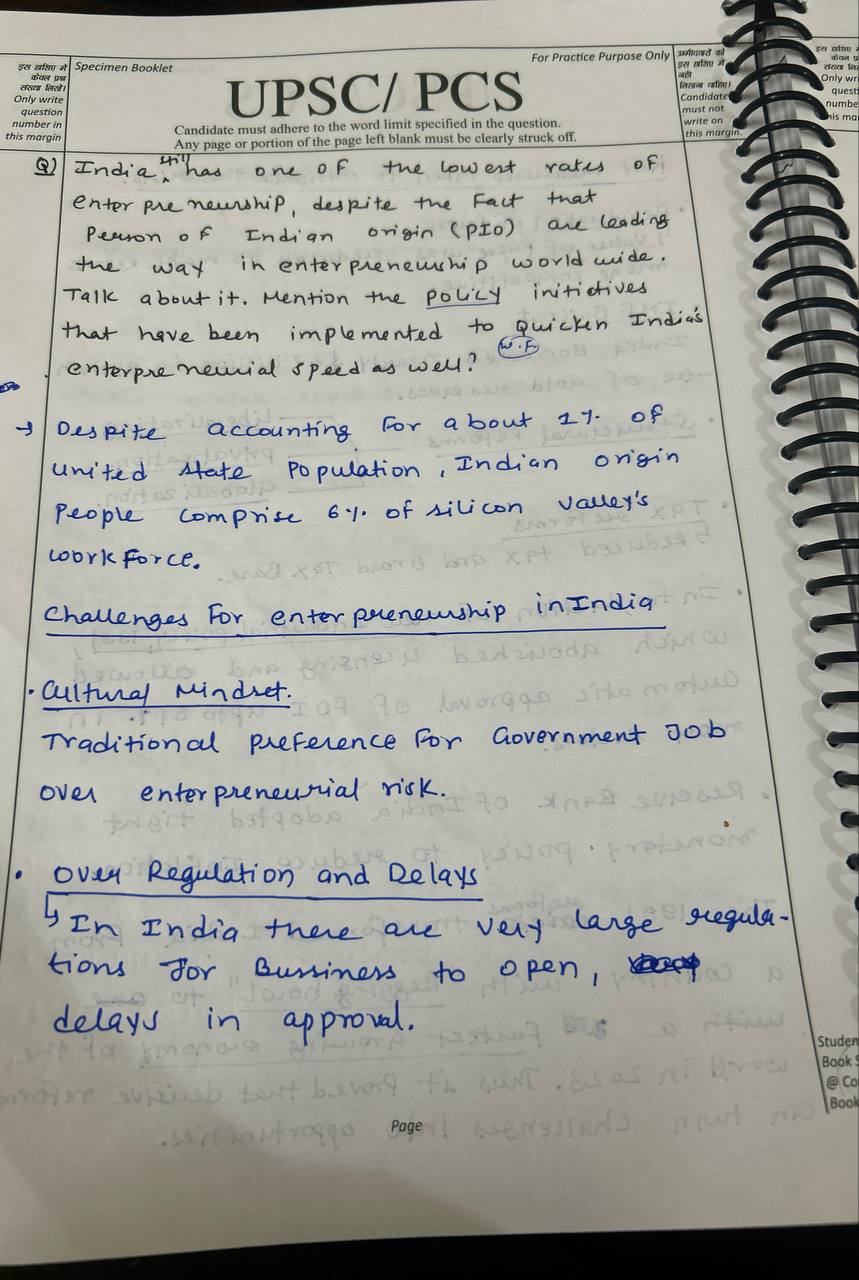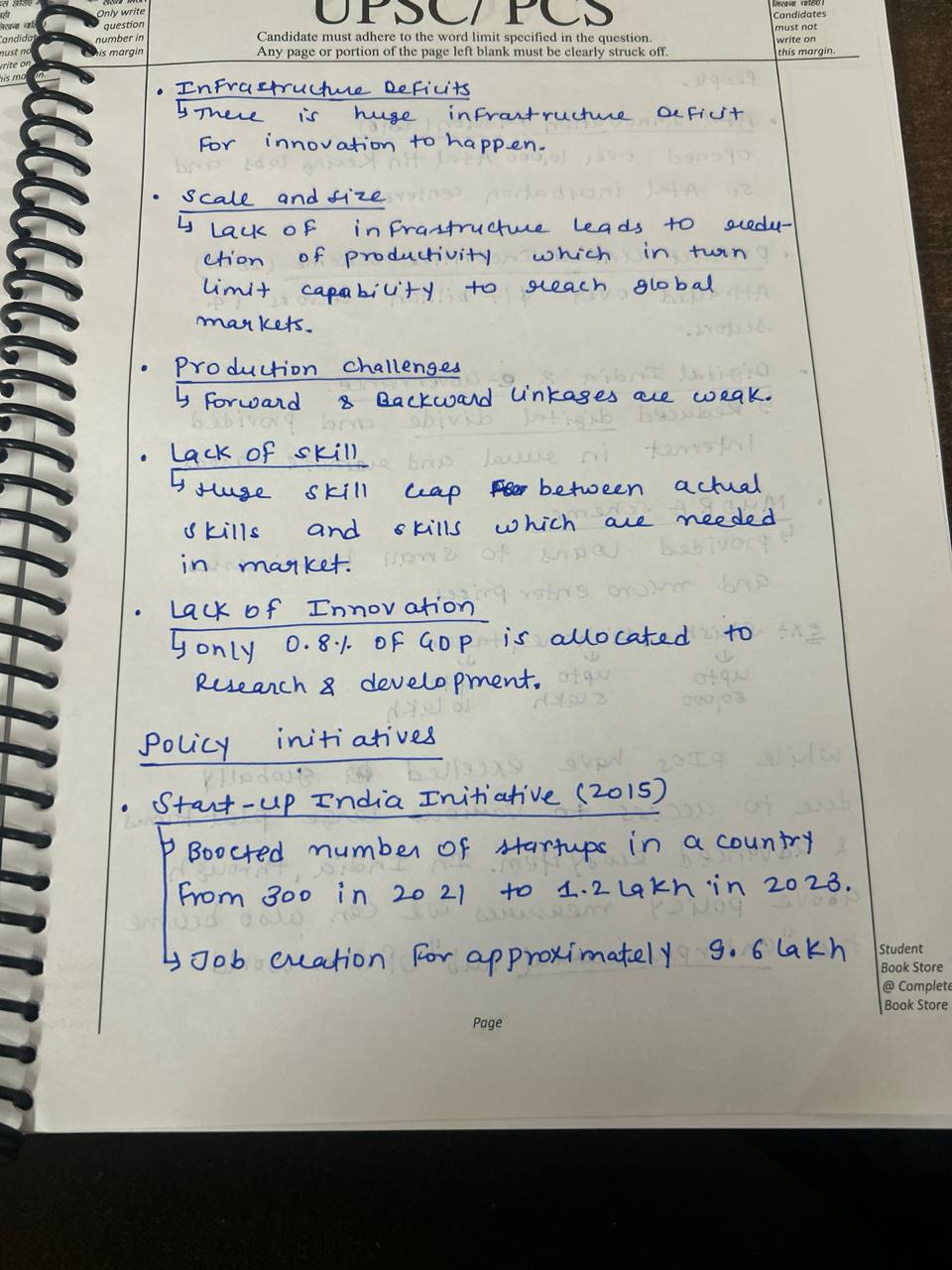India still has one of the lowest rates of entrepreneurship, despite the fact that Persons of Indian Origin (PIO) are leading the way in entrepreneurship worldwide. Talk about it. Mention the policy initiatives that have been implemented to quicken India’s ...
Model Answer Introduction Inclusive growth, as defined by the OECD, refers to economic growth that is fairly distributed across society and creates opportunities for all. However, achieving inclusive growth within a market economy, which operates primarily on supply and demand principles without sigRead more
Model Answer
Introduction
Inclusive growth, as defined by the OECD, refers to economic growth that is fairly distributed across society and creates opportunities for all. However, achieving inclusive growth within a market economy, which operates primarily on supply and demand principles without significant government intervention, presents several challenges.
Challenges to Inclusive Growth in a Market Economy
- Access to Essential Services: The profit-driven nature of a market economy often neglects the needs of marginalized populations, exacerbating socio-economic disparities. For instance, the establishment of industries can lead to the displacement of local communities, depriving them of their livelihoods.
- Limited Government Intervention: The lack of government involvement restricts the ability to implement social welfare schemes that could support disadvantaged groups.
- Income Inequality: A focus on GDP growth can lead to significant income disparities. According to Oxfam, in 2021, the top 1% of India’s population owned over 40.5% of the total wealth, while the share of the lowest 50% decreased from 8.5% in 1991 to just 2.8% in 2021.
- Regional Imbalances: Economic growth tends to concentrate in specific sectors and regions, such as the skilled workforce in Bengaluru, leaving other areas underdeveloped.
- Sustainability Issues: The consumerism-driven market economy often disregards environmental sustainability, risking the depletion of natural resources for future generations.
Significance of Financial Inclusion in India
Financial inclusion is vital for fostering inclusive growth in India. It plays several key roles:
- Expanding the Resource Base: Initiatives like the Pradhan Mantri Jan Dhan Yojana (PMJDY) have led to over 43 billion beneficiaries depositing a total of ₹146,231 billion, promoting a culture of saving among the rural population.
- Stimulating Economic Activity: Access to credit through programs like the PM Mudra Yojana encourages entrepreneurship and the establishment of micro, small, and medium enterprises (MSMEs), which are crucial for economic growth.
- Enhancing Economic Conditions: Technological advancements, such as the Unified Payments Interface (UPI), facilitate better integration with formal financial services, plugging leakages and increasing savings.
- Providing Security: Financial products like insurance and pension schemes reduce uncertainty, allowing individuals to invest in their futures and contribute to economic growth.
Conclusion
In conclusion, while inclusive growth faces significant challenges in a market economy, financial inclusion is a critical component that can help bridge the gap and ensure that economic growth benefits all segments of society.
See less



See less